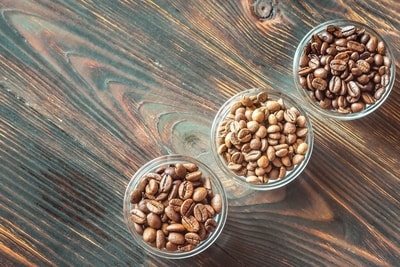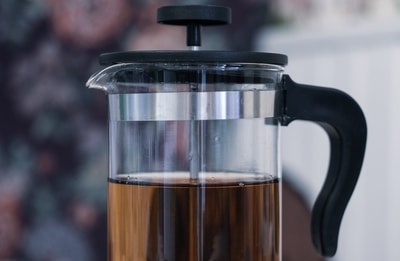The Complete Guide to Pour Over Coffee (With Video)
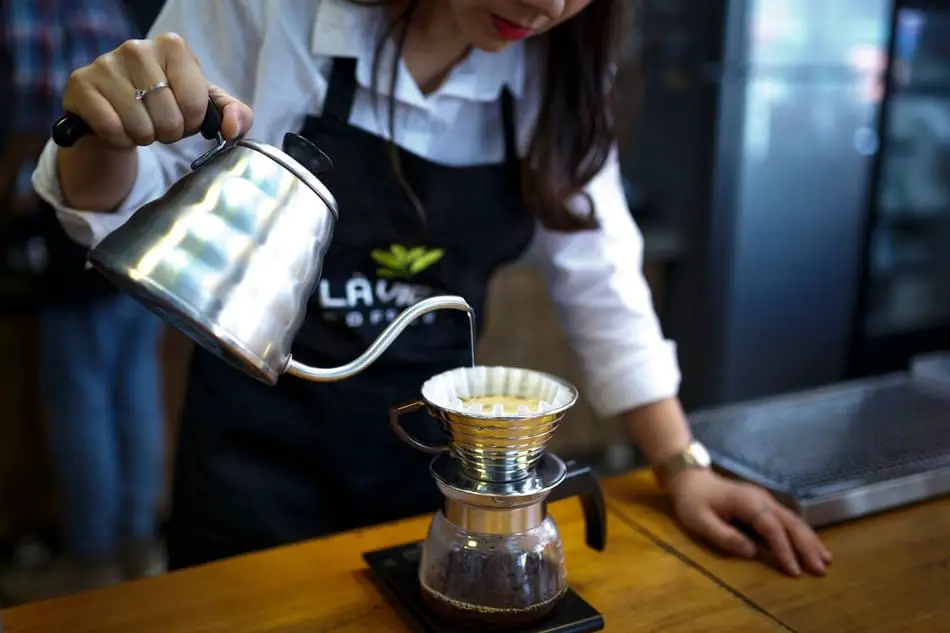
Pour over coffee is increasingly being found on cafe menus around the world and for good reason, because pour over is delicious. But with such a huge choice of coffees on offer, you’re left wondering what even is pour over coffee?
Pour over is a coffee brewing method known as percolation. Percolation is a method whereby boiled water is poured over a bed of coffee in stages, immediately filtering through into a carafe. Pour over brewers are either cone-shaped or flat-bottomed. Pour over coffee is aromatic, has bright acidity and is light in body.
If you’ve never tried pour over coffee, you’re in for a treat. Read on for all the information you need plus a video on how to make pour over coffee.
Pour over coffee
Pour over coffee makers are a type of percolation brewer. Percolation brewers differ from infusion, or full-immersion, brewers because they brew by submerging all of the ground coffee in all of the water. Some examples of infusion brewers are the French press, AeroPress or Clever Dripper.
Pour over, or percolation, coffee has a very different flavour profile to coffee prepared using infusion brewers. Pour over coffee is bright, aromatic and fragrant with a thinner body and heightened acidity.
Preparing coffee using a pour over coffee maker is said to give the coffee a ‘pour over taste’, influencing and changing how the coffee beans taste.
Infusion, or full-immersion, brewers have little impact when it comes to altering the coffee beans inherent flavours, which is why it’s the method used to cup (test and assess) coffee.
To make a cooking comparison, an infusion brewer would be like cooking vegetables by steaming. Steaming vegetables means that there is little effect on the natural flavours of the vegetables.
Pour over brewers alter the taste in the same way that frying or grilling vegetables do – the cooking method creates new flavours.
One excellent benefit, apart from taste, is that pour over coffee requires less ground coffee than infusion to achieve the same strength.
Typical coffee-to-water ratios for pour over are 60g per litre whereas infusion is 75g per litre. That’s 25 percent less coffee for the same brew strength. Nifty.
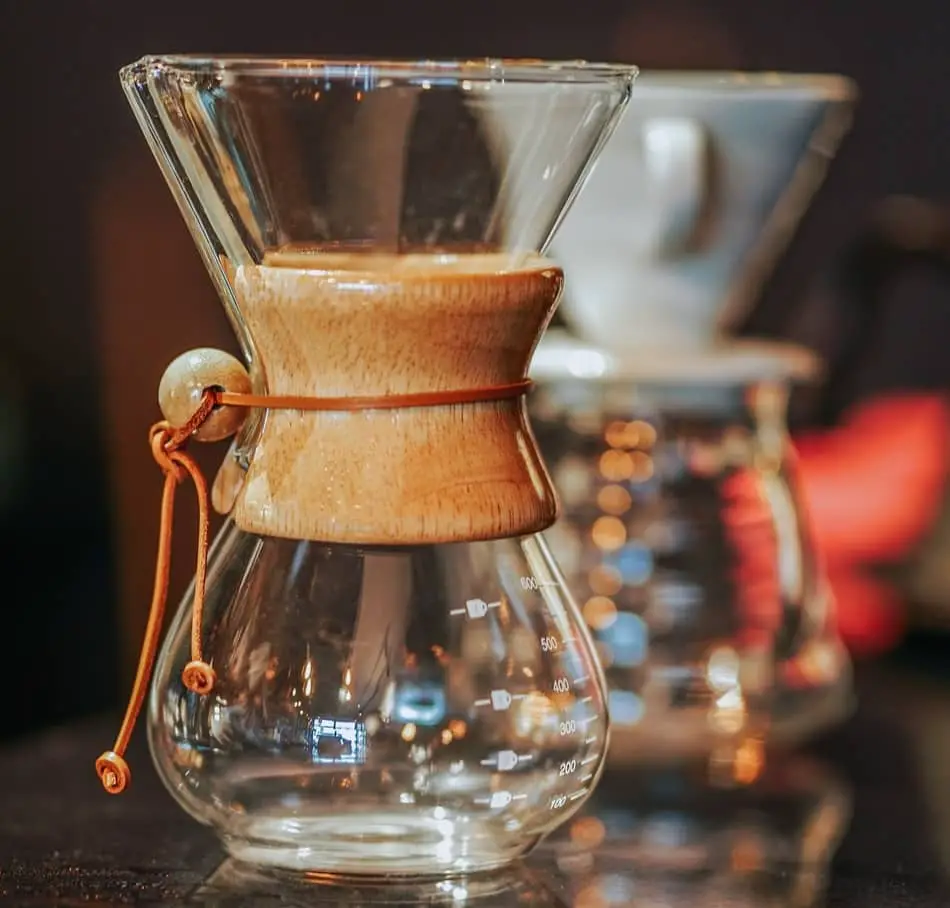
Pour over coffee makers
Pour over coffee makers are essentially funnels. They tend to be either cone-shaped or flat-bottomed. At the bottom of the brewer is one or more holes through which the liquid coffee passes.
The most popular pour over coffee makers are the Hario V60, Kalita Wave, Chemex and to a lesser extent the Beehouse.
Pour over coffee makers require a filter of some kind to separate the ground coffee from the liquid. Filters come in a variety of materials such as paper, plastic, metal or cloth. Each type of filter influences how the coffee tastes.
The coffee makers themselves also come in a variety of materials. The most popular brewers are either made from glass, metal, ceramic, copper or plastic. Some coffee makers, such as the Hario V60 and Kalita Wave, come in a variety of materials.
Maintaining a high water temperature is incredibly important when preparing pour over coffee. Because the water is in contact with the coffee for a short amount of time, the water needs to be extremely hot in order to efficiently extract the flavour from the ground coffee.
Coffee aficionados such as James Hoffmann and Matt Perger have actually praised the idea of using boiling water (100°C / 212°F) when making a pour over, especially with lighter roasts.
A way to ensure that the water stays as hot as possible is to use a plastic coffee maker. Plastic is superior at retaining heat, something that’s probably a surprise to you. We’ll look at this in a bit more detail later on.
Cold brew coffee can also be prepared using a type of slow drip pour over method. Cold water is fed drop by drop over a bed of coffee in a process that lasts anywhere from three to six hours.
Despite taking so long, it’s a lot quicker than the more common method of brewing cold brew by infusion. Slow drip cold brew also produces a very different flavour profile that’s brighter and less heavy. Check out our five cold brew coffee recipes that you can make easily at home.
The grind quality (uniformity) is highly important in pour over preparation – much more so than with infusion. Huge differences in the size of the coffee grounds create a cup of coffee that is unbalanced.
This is like how you chop up vegetables to the same size in order to cook at the same rate. A combination of smaller and larger pieces results in under- and over-cooking. The same is true for coffee.
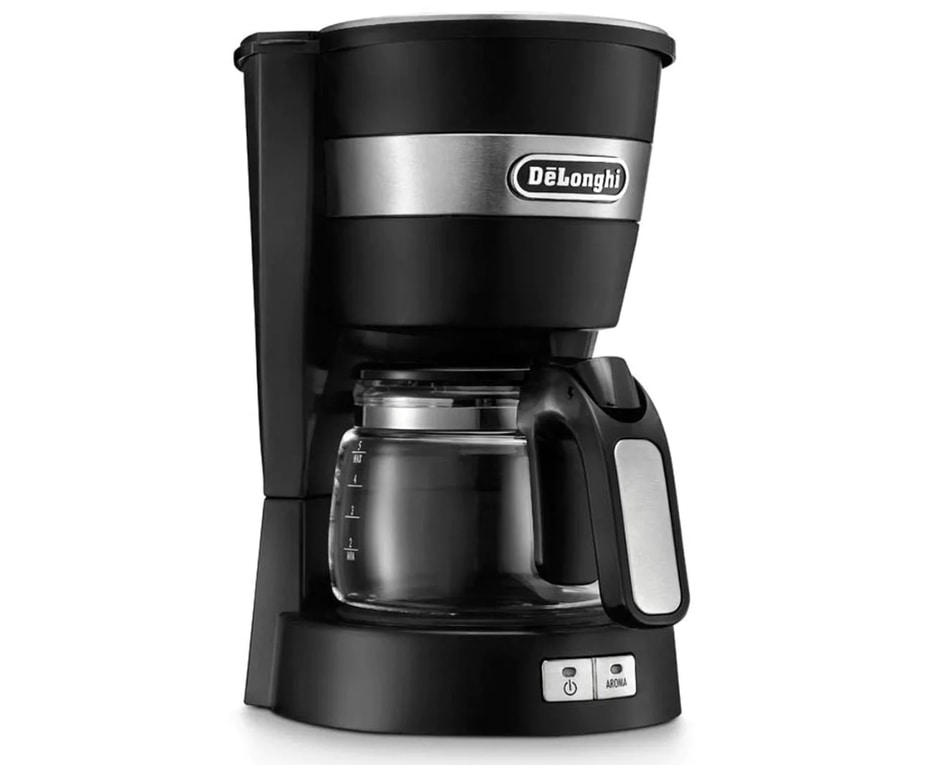
What is the difference between pour over and drip coffee?
Pour over and drip coffee are both percolation brewers, but they differ in that pour over is manual and drip is electric. Manual pour over brewers provide greater control, making for a superior cup of coffee. Electronic drip machines are programmable and more convenient as the machine brews the coffee for you.
Being able to control the flow of water and its temperature is vital to producing a great-tasting cup of pour over coffee.
Electronic drip machines use spray heads that expel the water at set parts of the coffee bed, meaning that some parts of the ground coffee will over-extract and some parts will under-extract (over- and under-cook). This results in an unbalanced cup of coffee.
Most drip machines also have unstable water temperatures, something which is especially true on cheaper machines.
But despite the disadvantages of drip coffee machines, they’re an excellent way to enjoy fuss-free coffee. More expensive machines are programmable, meaning you can wake up to freshly brewed coffee.
This is something to take into account as pour over coffee is one of the most labour intensive coffee preparation methods. You can’t go rushing or forgetting about. Something to think about if you all you want is a caffeine-fix at 5am.
Is pour over coffee better?
Pour over highlights the qualities of the coffee beans, creating a more refined cup of coffee that is better than many other coffee makers. Pour over provides greater control, so you can tailor your coffee to how you like it. For these reasons, coffee experts often cite pour over as their favourite brewing method.
Scott Rao famously loves his plastic Hario V60 because of its angular shape and excellent heat retention that produces wonderfully aromatic coffee.
The annual World Brewers Cup championship is also regularly won using pour over coffee makers, which shows that pour over is the go-to method for industry professionals.
Saying all this, everyone has their own likes and dislikes, and there’s no getting away that infusion brewers make delicious coffee.
Perhaps better is the wrong word to use. Instead, I’ll say pour over makes different coffee. You might prefer the big, bold flavours of a French press, and that’s fine.
The best thing to do is give it a try. Pour over coffee makers can be bought for as little as $8, so make sure to check out our recommended pour over that we’re going to look at now.
Best pour over coffee making equipment
The two best pour over coffee makers are the Hario V60 and the Kalita Wave. These two brewers often divide many a barista as to which is better.
Instead of getting into which is better, something more helpful for a beginner is which is easier to use?
Kalita Wave
The answer to that has to be the Kalita Wave. Its flat bottom makes it easier to consistently prepare delicious and balanced coffee.
The Kalita Wave is more a more ‘forgiving’ coffee maker in that you don’t have to be so exact in your water-pouring technique as the flat bottom compensates for errors.
The Wave comes in either glass or stainless steel. I would recommend the stainless steel version just because glass is easily broken.
Hario V60
The Hario V60 is a little more finicky. Correct grind size and pouring technique are essential.
But don’t fear. All it takes is a little practice and you can make great V60 coffee.
The V60 also has the added bonus of coming in plastic. Whilst this might seem odd to recommend the plastic version as the copper, ceramic and glass versions seem more premium, plastic is by far the best material for heat retention.
Other materials suck a whole load of heat out of the water, which is why they become so hot. It’s essential to keep your water as hot as possible during a pour over, so plastic is king as it absorbs the least heat.
Bonavita Gooseneck Kettle
When you watch the how-to video below, you’ll notice the use of a strange-looking kettle.
Because of the shape of the spout, they’re known as gooseneck kettles. They ensure that the water flows out in a steady stream, enabling you to pour exactly where intended.
Although gooseneck kettles aren’t absolute essentials, they do make brewing pour over a lot easier. Plus the Bonavita has a temperature control feature so you can heat the water to the perfect temperature.
If you’re interested in buying any one of these products, make sure to check it out on our Kit.co page for the best price possible. You’ll also find all of our other recommended products there too.
How to make pour over coffee
This is one of the most informative pour over instructional videos you’ll find anywhere online.
The video is made by Scott Rao, one of the leading industry experts of the past few decades. Scott really knows his stuff, constantly challenging and looking to improve the specialty coffee industry.
Final thoughts
Pour over will really take your coffee to the next level. Yes, it’s a bit more fiddly, but it’s well worth the effort. Plus, playing with coffee is fun!
If you’ve never tried pour over coffee and you’re sceptical about the taste, try visiting your local specialty coffee shop by googling specialty coffee near me.




